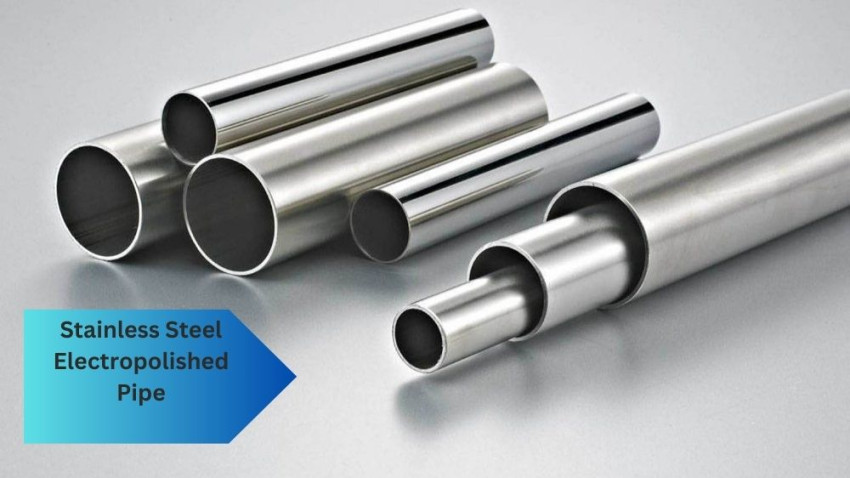
In semiconductor manufacturing, achieving ultra-high purity is of utmost importance. Even very low levels of impurities can cause degradation of performance and even complete failure of the semiconductor device. To this end, multiple techniques are employed to achieve the desired purity levels. One such technique is Electropolishing. In this blog post, we will discuss the role of Electropolishing in achieving ultra-high purity in semiconductor manufacturing.
What are Stainless Steel Electropolished Pipe?
Stainless steel electropolished pipes are a type of stainless steel pipes that undergo an electrochemical process called electropolishing. Electropolishing is a surface finishing technique used to remove surface imperfections and enhance the corrosion resistance of stainless steel.
During the electropolishing process, the stainless steel pipe is submerged in an electrolyte solution and connected to the anode of a power supply. The pipe acts as the cathode, and when a current is applied, metal ions are removed from the surface, resulting in a smooth, polished finish.
The electropolishing process offers several benefits to stainless steel pipes. Firstly, it removes burrs, weld marks, and other surface irregularities, resulting in a smooth and clean surface. This smooth surface reduces the likelihood of bacteria buildup, making electropolished pipes suitable for food and beverage, pharmaceuticals, and medical application
Secondly, electropolishing improves the corrosion resistance of stainless steel pipes. By removing the outer layer of the metal, the process eliminates potential areas for corrosion initiation. This makes electropolished pipes ideal for environments where resistance to corrosion is crucial, such as chemical processing plants and marine applications.
Moreover, electropolished pipes have aesthetic advantages. The process imparts a bright and reflective finish, giving the pipes a visually appealing appearance. This makes them suitable for architectural and decorative applications where aesthetics are important.
In summary, stainless steel electropolished pipes offer improved surface smoothness, enhanced corrosion resistance, and aesthetic appeal. These qualities make them a popular choice in various industries that require high-quality, durable, and visually appealing stainless steel piping systems.
The Importance of Electropolishing in Pharmaceutical and Biotech Applications
- Surface Smoothness: Electropolishing creates a smooth and uniform surface finish on stainless steel pipes. This smoothness is vital in pharmaceutical and biotech applications where bacteria, contaminants, and particles must be minimized.
- Enhanced Cleanability: The electropolishing process removes surface contaminants and oxides, resulting in a clean and pristine surface. This cleanliness is essential in pharmaceutical and biotech settings, where strict cleanliness and hygiene standards must be maintained.
- Corrosion Resistance: Stainless steel pipes used in pharmaceutical and biotech applications must withstand aggressive chemical agents and environments. Electropolishing enhances the corrosion resistance of stainless steel by removing impurities and creating a passive chromium-rich oxide layer on the surface.
- Purity and Product Integrity: Electropolishing helps achieve high purity in pharmaceutical and biotech processes. Electropolished pipes minimize the risk of product contamination by removing surface impurities and contaminants. This is particularly important in industries where the purity and integrity of the final product are critical.
The Key to Achieving Ultra-High Purity in Semiconductor Manufacturing
Electropolishing involves using an electrolyte solution and an electric current to remove a controlled amount of surface material from a metal part. The process removes any contaminants that may be present on the surface of the metal and provides a smooth, clean surface finish that greatly reduces the chances of contamination in subsequent manufacturing processes. In semiconductor manufacturing, Electropolishing is used to prepare the surfaces of parts for the growth of ultra-thin layers of semiconducting materials.
One of the primary benefits of Electropolishing is that it can remove the surface layer of metal that contains impurities and contaminants without affecting the bulk material, thereby maintaining the properties required for optimal device performance. The process can remove surface oxides, contamination from previous manufacturing steps, and even small scratches or defects that could cause further issues in later manufacturing stages.
Conclusion
In conclusion, Electropolishing is critical in achieving ultra-high purity levels in semiconductor manufacturing. It is a versatile process that can clean complex parts, remove surface contaminants, and provide smooth, clean surfaces required for the growth of ultra-thin layers of semiconducting materials. The process can prevent impurities from causing performance degradation or device failure, ensuring that the highest quality devices are produced. As the demand for higher performance and reliability of semiconductor devices increases, Electropolishing will continue to be an essential technique in achieving these goals.





